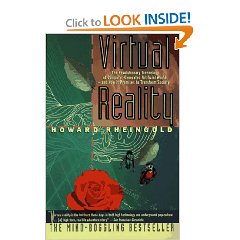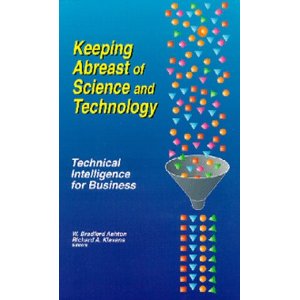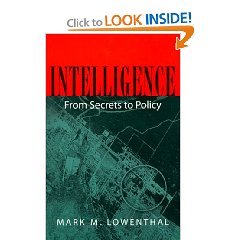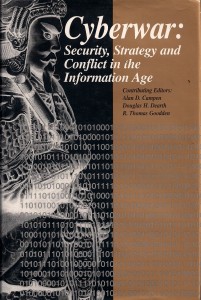2000 Presidential Leadership and National Security Policy Making
Articles & Chapters, Decision-Making & Decision-Support, Strategy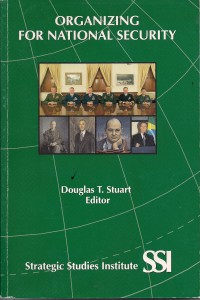
Chapter 12, “Presidential Leadership and National Security Policy Making,” pp. 245-282.
PDF (38 Pages): Chapter 12 Presidential Leadership
Background
The Ninth Annual Strategy Conference, held at the U.S. Army War College in 1998, addressed the theme of “Challenging the United States Symmetrically and Asymmetrically: Can America be Defeated?” In the course of that event, a number of speakers and participants, including the author, reflected on our existing policymaking process and our existing force structure, but without making recommendations for specific changes.
In the largest sense, the Ninth Annual Strategy Conference called into question every aspect of Joint Vision 2010 and clearly identified a need to come to grips with several asymmetric threats for which our existing force structure is not well suited as a primary defense. A summary of the conference was subsequently published and is readily available online.2
Continue reading “2000 Presidential Leadership and National Security Policy Making”
Review: World Brain
5 Star, Consciousness & Social IQ, Culture, Research, Decision-Making & Decision-Support, Democracy, Economics, Education (General), Education (Universities), Future, History, Information Operations, Information Society, Intelligence (Collective & Quantum), Intelligence (Commercial), Intelligence (Extra-Terrestrial), Intelligence (Government/Secret), Intelligence (Public), Intelligence (Wealth of Networks), Misinformation & Propaganda, Philosophy, StrategyReview: Keeping Abreast of Science and Technology: Technical Intelligence for Business
5 Star, Best Practices in Management, Change & Innovation, Decision-Making & Decision-Support, Education (Universities), Environment (Solutions), Games, Models, & Simulations, Information Operations, Intelligence (Commercial), Science & Politics of Science, Technology (Bio-Mimicry, Clean)W. Bradford Ashton (Editor), Richard A. Klavans (Editor)
Dick is a genius, and he and Bradford Ashton have pulled together a number of very fine contributions in this book. Still, they sum it up nicely in the concluding chapter: “The formal practice of developing technical intelligence in American business is only in its infancy.” They have a nice appendix of sources on scientific and technical intelligence that is missing a few big obvious sources like the Canadian Institute for Scientific and Technical Information (CISTI) and the Defense Technical Information Center (DTIC) as well as the Institute of Scientific Information (ISI) and several smaller sources. On balance, this technical intelligence community is, as Bradford notes, in its infancy. It is U.S. centric, does not yet understand operational security and counterintelligence, is weak of cost intelligence, relies too heavily on registered patents, and has too few practical successes stories. Especially troubling is the recent trend within DIA and the Air Force of cutting off all funding for open source exploitation of Chinese and other foreign S&T sources, combined with a dismantling by many corporations of their libraries and most basic market research functions. This book is an essential reference and I admire its authors greatly-sadly, they are part of a small minority that has not yet found its full voice.
Review: Consilience–the Unity of Knowledge
5 Star, Change & Innovation, Civil Society, Complexity & Resilience, Consciousness & Social IQ, Decision-Making & Decision-Support, Education (General), Environment (Solutions), Information Operations, Nature, Diet, Memetics, Design, Science & Politics of Science, Values, Ethics, Sustainable Evolution, Voices Lost (Indigenous, Gender, Poor, Marginalized)
Comment: This is still one of the best books for someone who wants to think deeply about knowledge. Below are links to some others I recommend.
Our answer to Levy, but an order of magnitude more practical and steeped in some of the best endnotes I've ever enjoyed. Consilience is the “jumping together” of knowledge across boundaries, and the greatest enterprise of the mind. He begins with an example, showing how biology, ethics, social science, and environmental policy must all come together to properly resolve a global environmental issue, but actually do not-the learned individuals are fragmented into four separate communities, and within those communities further fragmented into nationalities and cliques and jobs, and it is our greater loss for we cannot arrive at the best policy without being able to integrate the knowledge across all these boundaries. He emphasizes that the public must be educated and have access to this unified knowledge, not just the policymakers. He poses, and then answers across the book, this question: “What is the relation between science and the humanities, and how is it important to human welfare?” In my own mind, Edward O. Wilson has defined both national and global intelligence writ large, and done so in way that suggests the “virtual intelligence community” is a very practical and achievable vision.
The Future of Life
The Wealth of Networks: How Social Production Transforms Markets and Freedom
The Wealth of Knowledge: Intellectual Capital and the Twenty-first Century Organization
Revolutionary Wealth: How it will be created and how it will change our lives
Powershift: Knowledge, Wealth, and Power at the Edge of the 21st Century
Infinite Wealth: A New World of Collaboration and Abundance in the Knowledge Era
The Age of Missing Information
Forbidden Knowledge: From Prometheus to Pornography
Smart Mobs: The Next Social Revolution
Information Productivity: Assessing Information Management Costs of U. S. Corporations
Review: Intelligence–From Secrets to Policy
4 Star, Decision-Making & Decision-Support, Executive (Partisan Failure, Reform), Intelligence (Government/Secret)This is an excellent elementary text for the average college student. Over-all it is strong on issues of analysis, policy, and oversight, and weak on collection, covert action, and counterintelligence. The chapter on collection has a useful figure comparing the advantages and disadvantages of the five collection disciplines, and but does not get into the detail that this aspect of the intelligence community-80% of the annual expense-merits.


